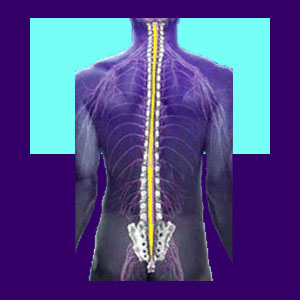
Suffering any form of spinal cord damage can be a catastrophic occurrence for any patient. The spinal cord is the main conduit of life energy in the human body and is directly responsible for providing movement and sensation for most of the anatomy. Any damage to the cord itself can prove to have permanent and varied consequences which can drastically alter the quality of life.
Since treatment options are virtually nonexistent for spinal cord injuries, patients must adapt to an entirely new outlook on life, including limits of what they can and can not do physically. Luckily, society is far more receptive to the needs of physically-challenged people today than ever before, so even with severe spinal cord conditions; life can go on and be very rewarding.
This dissertation delves into providing lesser known facts about suffering a damaged spinal cord.
Spinal Cord Damage Facts
There are many classifications of cord injury and just as many reasons for trauma to occur.
Spinal cord injury can take place from a variety of disease processes, as well as congenital and developmental conditions. Cord damage can also take place from traumatic injury, such as that caused by car accidents, sporting injuries or serious falls.
Trauma will usually enact instant or near instant damage, which is described as acute injury. In some cases, the spinal cord is not injured, but merely compressed by temporary inflammatory processes, which will usually subside, leaving no permanent damage.
Disease processes usually act slower and in a more predictable manner, creating damage over time, as opposed to all at once.
Damaged Spinal Cord Classifications
Complete spinal cord injury describes a condition in which all neurological impulses below the affected level cease to work correctly. The result will be paralysis below the damaged level. This is an objective diagnosis. Unfortunately, most complete cord injuries will never improve, despite therapy and medical care, since treatment efficacy is highly limited.
Incomplete spinal cord injury means that some of the functionality remains, but the extent of nerve conduction is not defined. This is a very subjective diagnosis, since some people suffer minor functional impairments, while others are almost completely devoid of motor and sensory abilities below the injured level.
Statistically, incomplete cord injuries are more likely to improve with time, although this is far from a rule set in stone. Many spinal cord traumas will never improve significantly.
Spinal Cord Damage Opinions
Unfortunately, even with all the progress we have achieved using modern medicine, there has been little headway in the fight against spinal cord injury. In almost every case, damage to the cord is permanent and can not be reversed.
The one hope for effective treatment seems to lie in the use of stem cells, but this pathway has been impeded by the same ethical and religious naysayers who traditionally have prevented much scientific progress in the history of our species. Maybe some compromise can be found to appease all parties, bringing the millions who suffer terrible and afflictive spinal cord injury one step closer to regaining some measure of functionality, instead of being forced to the side lines to listen to some unaffected people fight about the ethical ramifications of using stem cells.
Come on people, don’t you think it is time for some compromise here?




